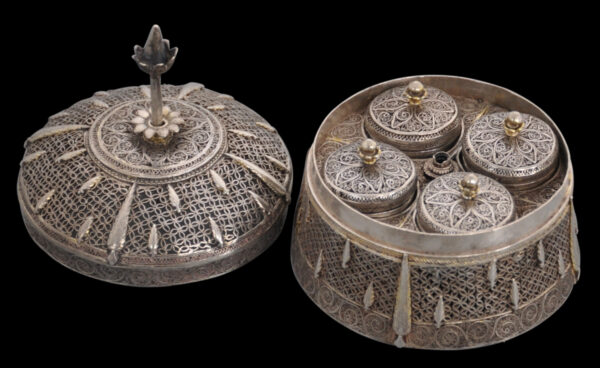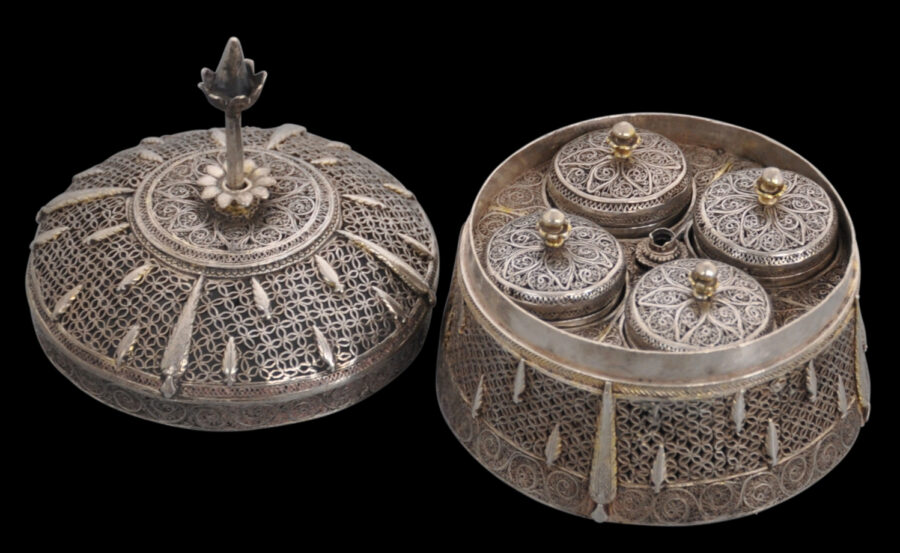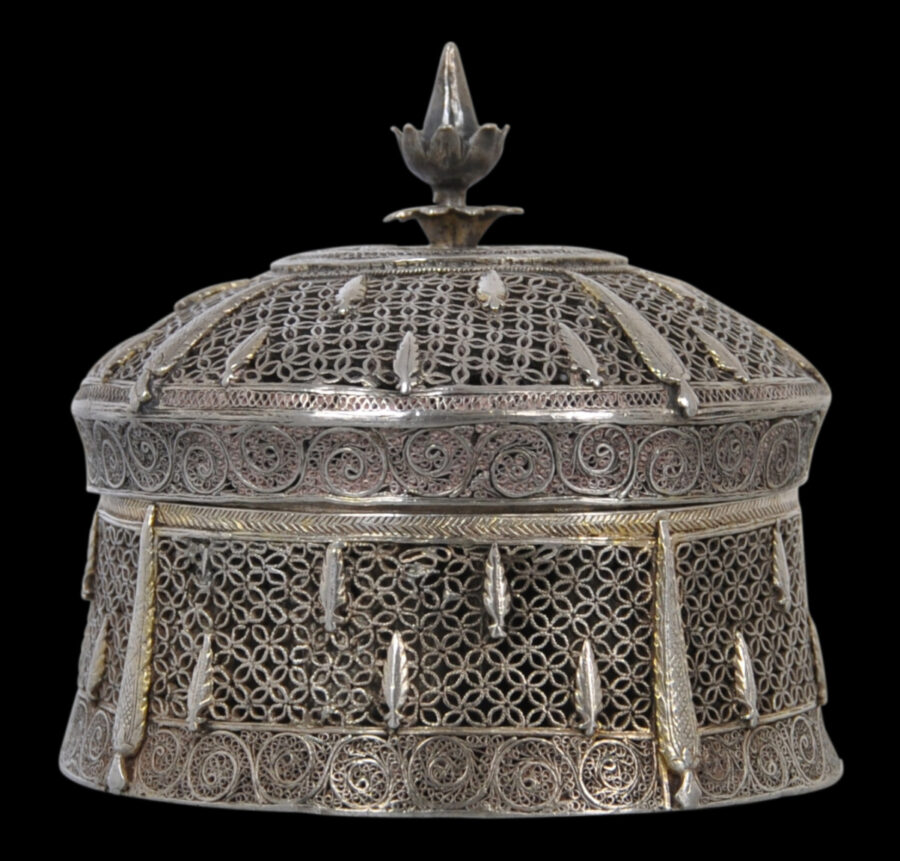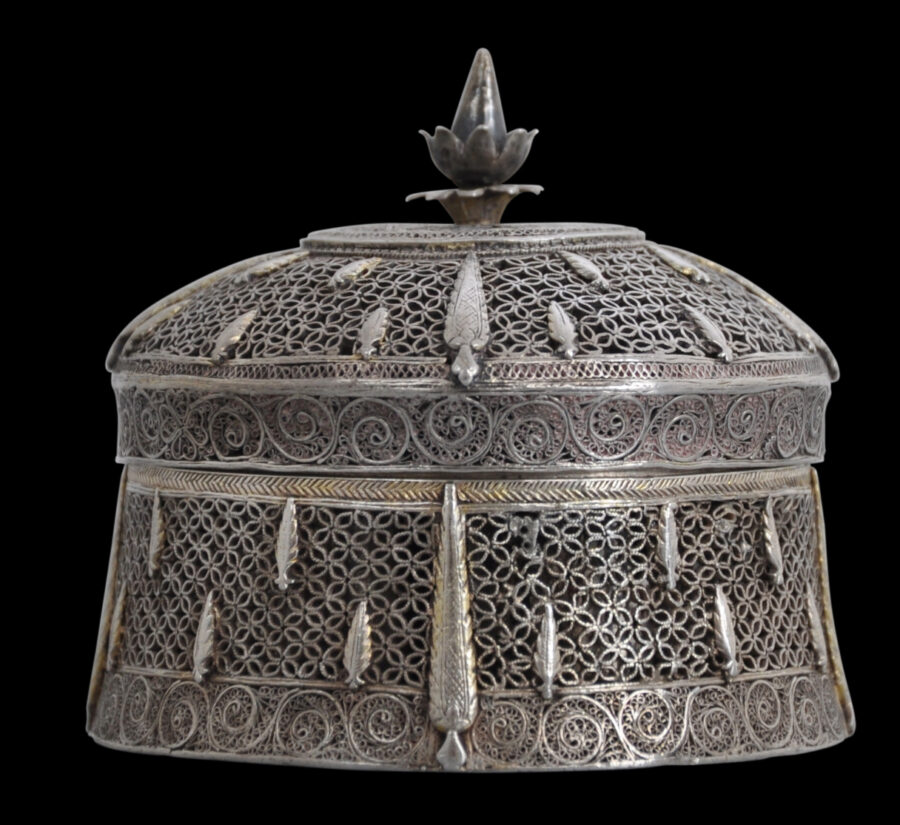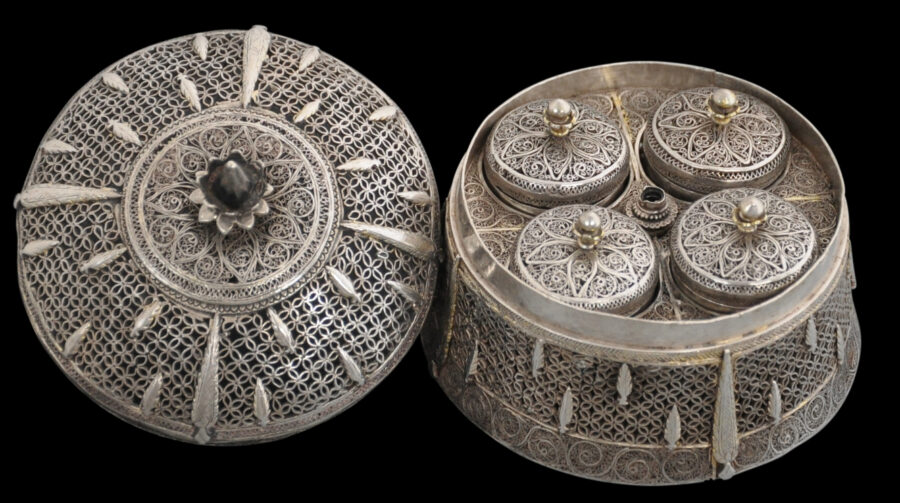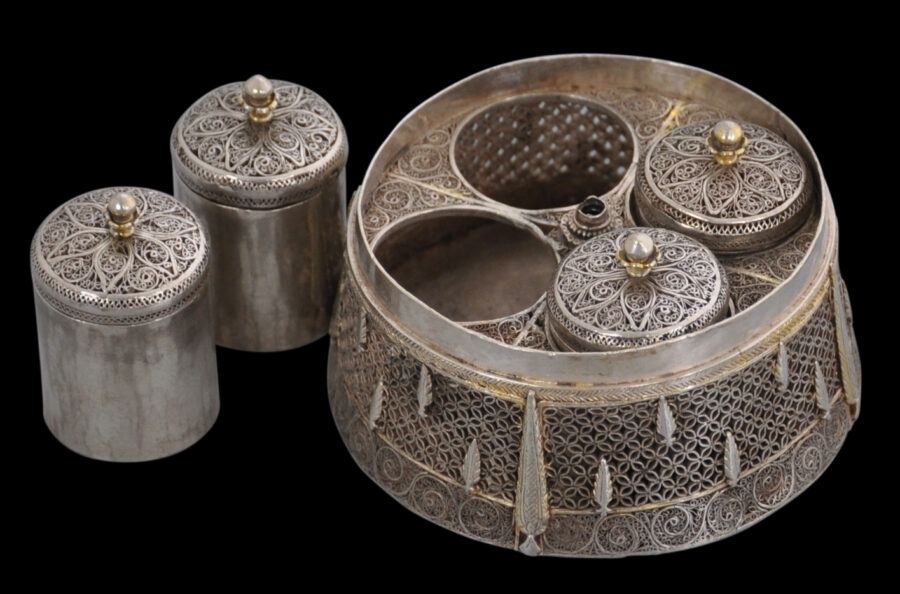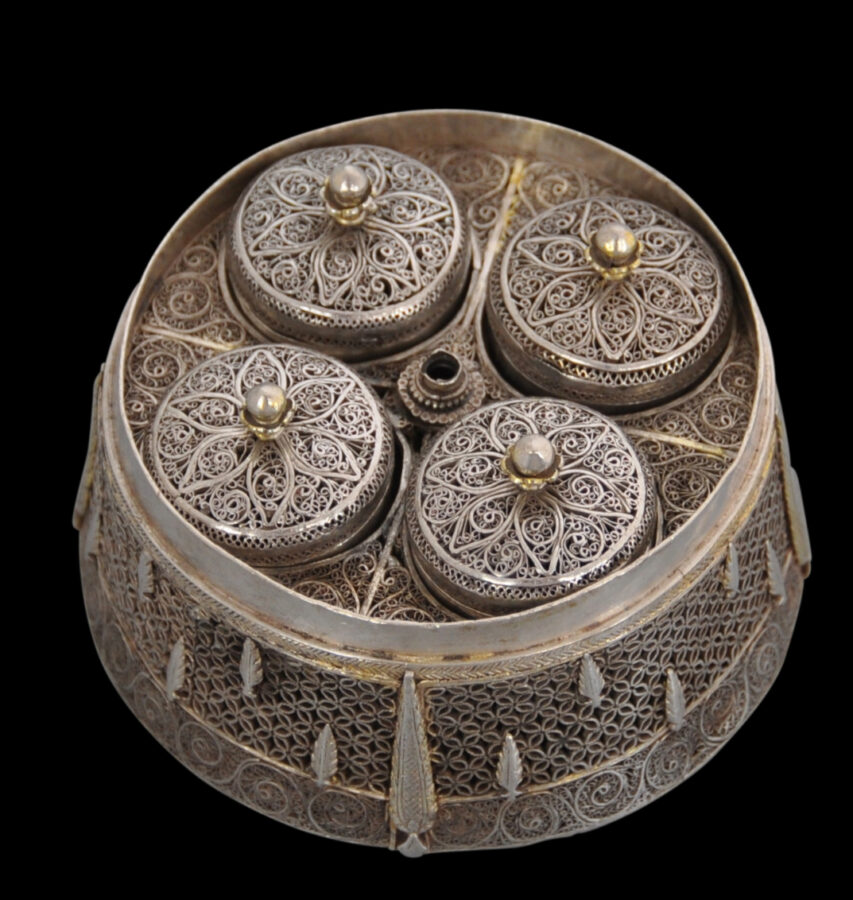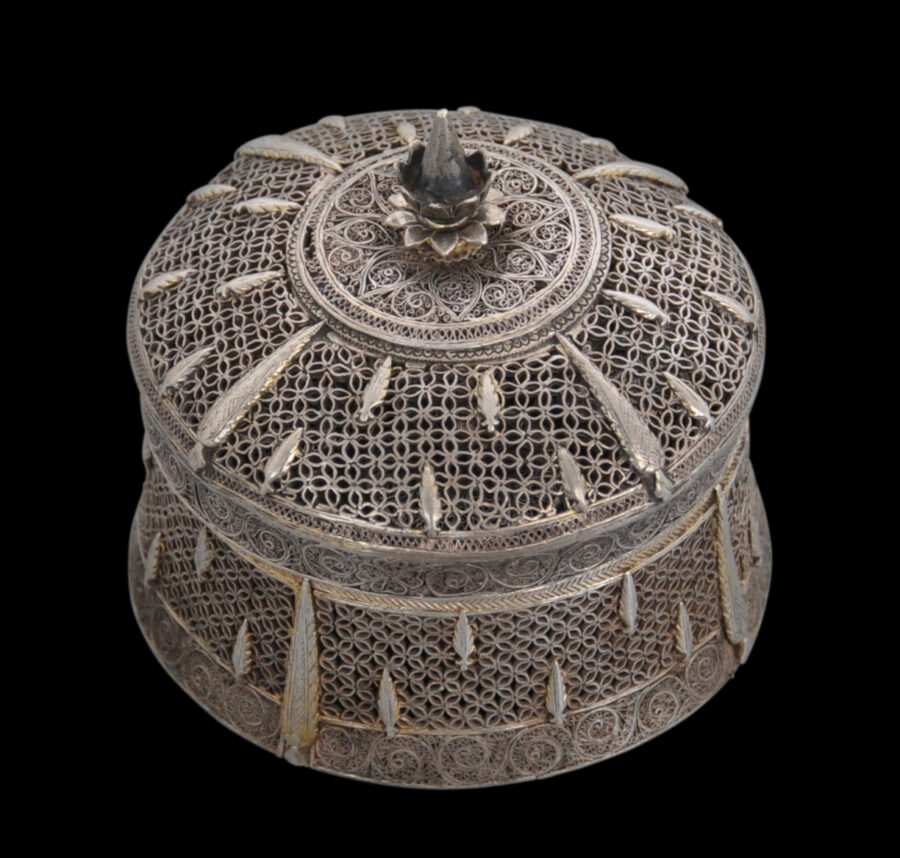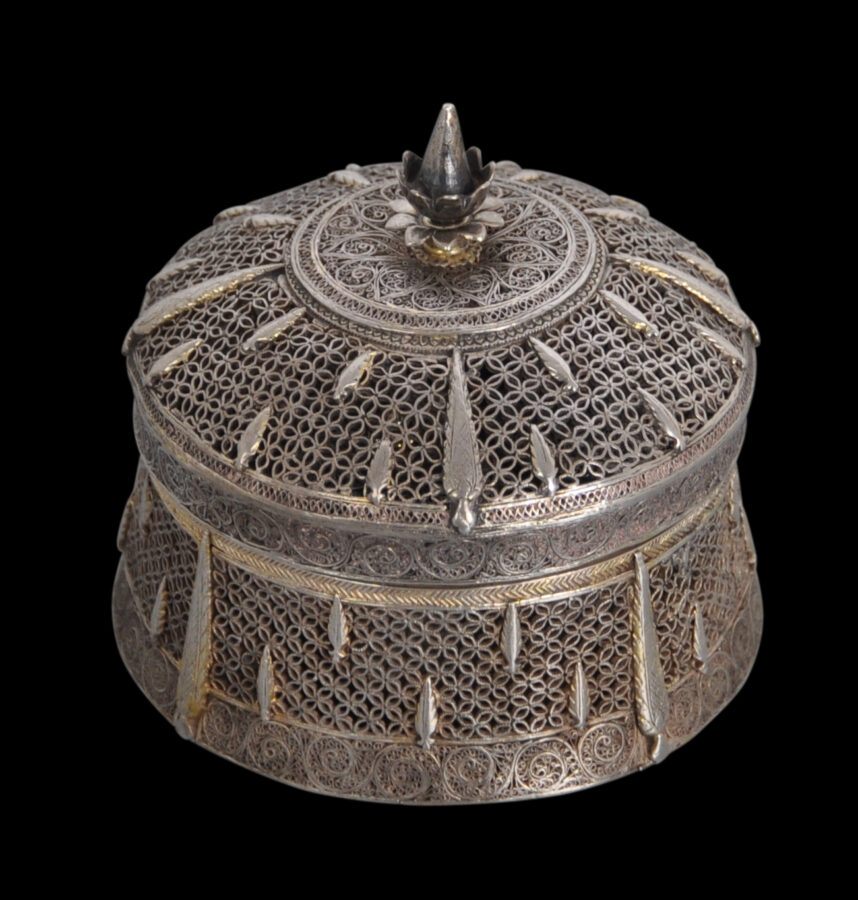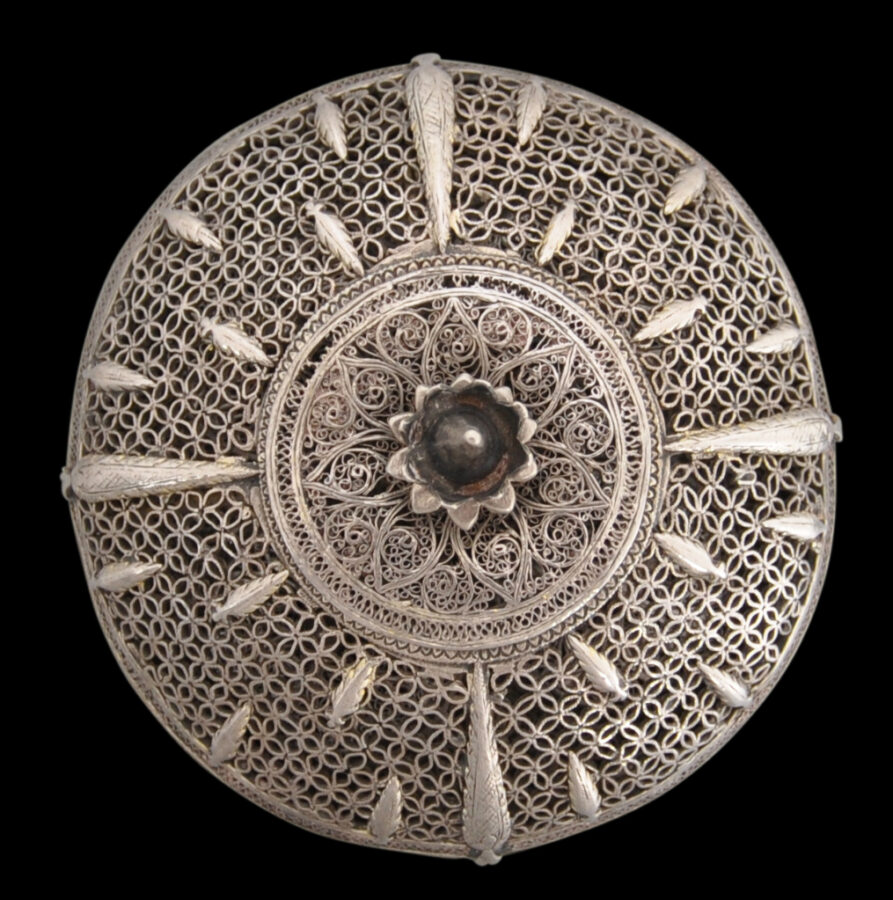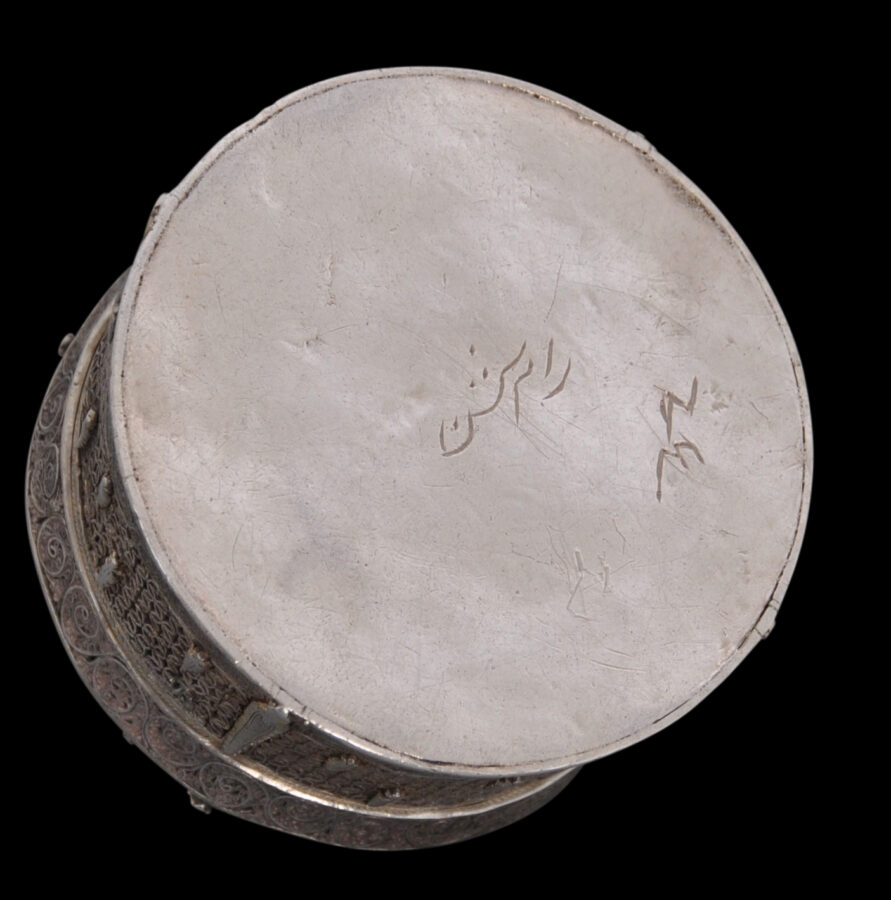This is a remarkable and very interesting box. It is of the form of an Indian betel box or pandan but it is in miniature and probably was intended to serve as a cosmetics or spice box. It is made variously of tight filigree swirls and panels of flower blossom lattice work, overlaid with elongated cypress tree-like motifs that have been engraved and gilded.
The box might have been made in India, or in the Dutch East Indies, or was made in the Dutch East Indies for the Indian market. The latter possibility is more likely than is often realised: the Dutch East India Company (VOC) routinely had luxury goods made in Batavia (near Jakarta today) for its intra-Asia trade and especially for its markets in India. Today, when these items are found in India (or are known to have come from India) it is assumed that they were made there, but this often was not the case.
The box has appealing waisted sides, and a domed cover that flares out beyond the sides. The cover has a bud-like finial which hides a screw mechanism which, when turned, allows the cover to be lifted off, to reveal an interior of four smaller boxes, each of which has a cover comprised of the same filigree that adorns the central part of the overall cover.
The sides of each of the small interior boxes are of solid silver sheet.
The underside in inscribed in Arabic. The inscription is not clear – the letters could be read as ‘r-a-m-sh-n’ (Ram Shan?) and the other two marks might be the numbers ‘2’ and ‘4’. The inscription is Arabic and possibly could be the Malay version of Arabic known as Jawi, but there is not enough inscription to be conclusive. What is notable is that the inscription is Arabic though rather than Farsi which is what might be expected have been expected if the box is definitely from northern India.
The waisted form of the box with its domed cover has several parallels that mostly are attributed to 17th century India (see for example, Zebrowski, 1997, p. 40, 44, 266-67).
Our example might have been made in India, but the filigree is more in keeping with filigree that is associated with 18th century Batavia or the West Coast of Sumatra in the Dutch East Indies (see Veenendaal, 2014 for a discussion on filigree produced in the Dutch East Indies but which is usually attributed to elsewhere). It is possible, perhaps likely, that it was made there for export for the Islamic market in India, perhaps as a diplomatic gift.
The box is in fine condition. There are small losses here and there to the filigree but these are more than compensated for by the item’s rarity.
References
Veenendaal, J., Asian Art and the Dutch Taste, Waanders Uitgevers Zwolle, 2014.
Zebrowski, M., Gold, Silver & Bronze from Mughal India, Alexandria Press, 1997.


